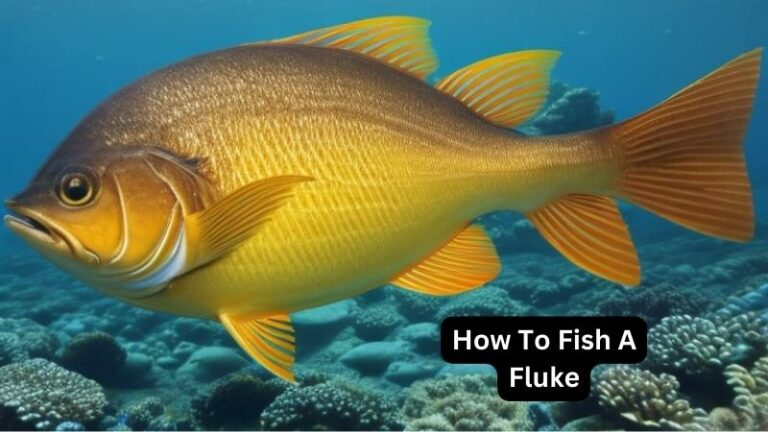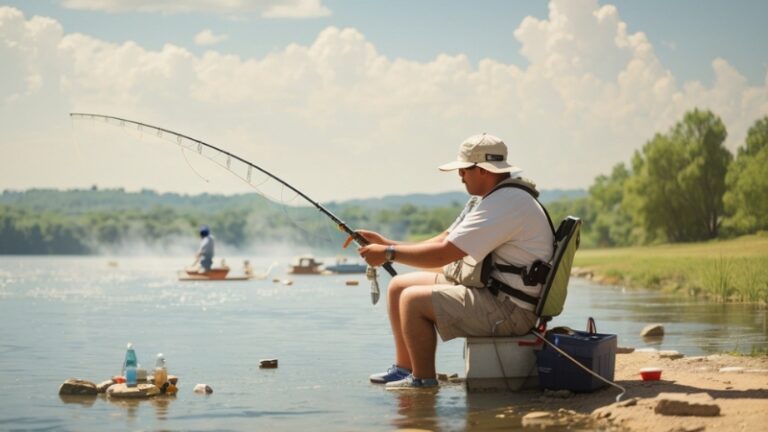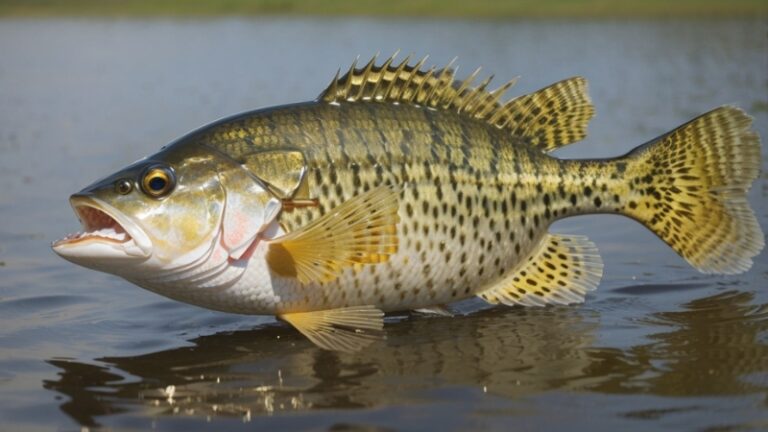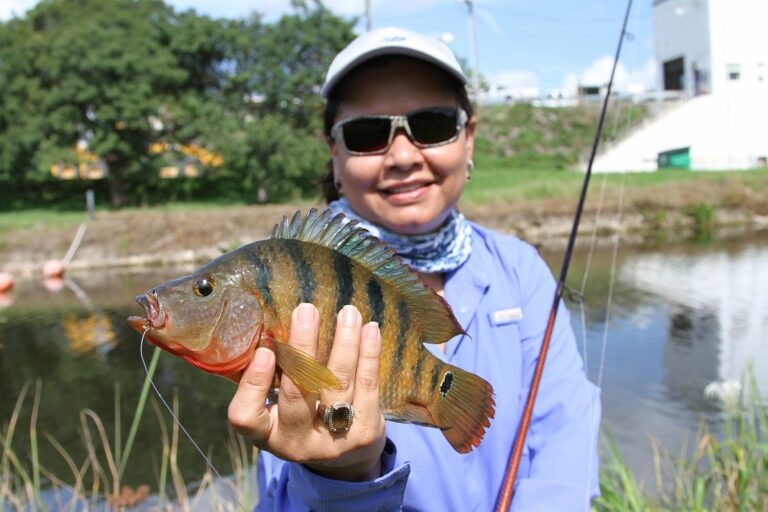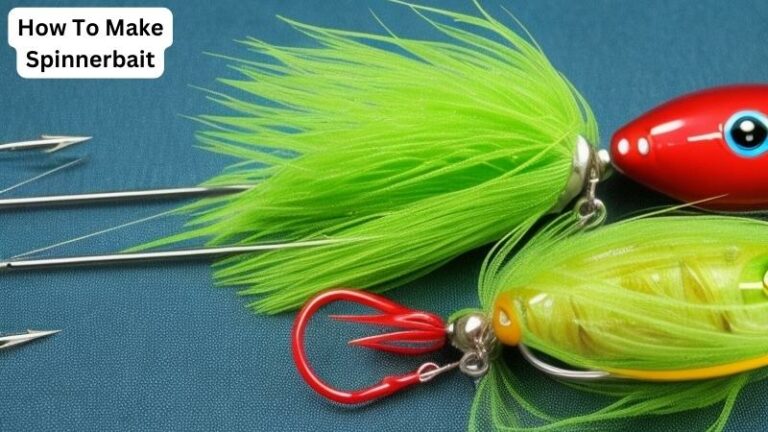The Ultimate Guide: How To Catch A Bass In A Pond
Looking to reel in a bass while enjoying a serene day by the pond? You’re in luck! Catching a bass in a pond is easier than you might think. With the right techniques and a little bit of patience, you’ll be hauling in those trophy-sized bass in no time. In this article, we’ll explore the best strategies and approaches to help you successfully hook that prized catch. So, let’s dive in and discover how to catch a bass in a pond!
How to Catch a Bass in a Pond
Pond fishing can be a rewarding and enjoyable experience, especially if you’re targeting bass. Bass are known for their strength, fighting spirit, and impressive size. Whether you’re a beginner or a seasoned angler, this comprehensive guide will provide you with everything you need to know about catching bass in a pond. From equipment selection to fishing techniques, we’ll cover it all. So, grab your fishing gear and let’s dive into the exciting world of bass fishing in a pond.
1. Choosing the Right Equipment
1.1 The Right Fishing Rod
When it comes to bass fishing in a pond, having the right fishing rod is essential. Look for a medium to medium-heavy spinning or baitcasting rod that is around 6 to 7 feet long. This length will provide you with the necessary leverage to handle the fighting bass, while also allowing for accurate casting.
1.2 Selecting the Suitable Reel
Pair your fishing rod with a quality reel that matches its specifications. For spinning rods, choose a spinning reel, and for baitcasting rods, opt for a baitcasting reel. Consider the gear ratio of the reel, with a speed of 6.4:1 being a good starting point for bass fishing.
1.3 Picking the Right Line
Selecting the appropriate fishing line is crucial for bass fishing success. Monofilament, fluorocarbon, and braided lines are all viable options. Monofilament offers versatility and forgiveness, while fluorocarbon provides invisibility and sinking properties. Braided lines offer strength and sensitivity, making them suitable for heavy cover situations.
1.4 Essential Terminal Tackle
In addition to your rod, reel, and line, you’ll need to stock up on some basic terminal tackle. This includes hooks, sinkers, and swivels. Choose hooks in sizes ranging from 2/0 to 5/0, which are ideal for bass fishing. For sinkers, opt for bullet or worm weights, depending on the fishing conditions and techniques you plan to use.
2. Understanding Bass Behavior
2.1 The Feeding Patterns of Bass
To increase your chances of catching a bass in a pond, it’s important to understand their feeding patterns. Bass are opportunistic predators and tend to ambush their prey. They often hide near vegetation, submerged structures, or drop-offs waiting for an easy meal. Early morning and late afternoon are prime feeding times for bass, so plan your fishing trips accordingly.
2.2 Identifying Bass Habitat
Knowing where bass are likely to be hiding is crucial for successful pond fishing. Look for areas with vegetation such as lily pads, submerged logs, fallen trees, and rocky structures. These spots serve as ideal hiding places for bass, providing shade, cover, and easy access to prey.
2.3 Understanding the Impact of Weather
Weather conditions can greatly influence bass behavior. On bright and sunny days, bass tend to seek cover and become less active. However, during cloudy or overcast days, they are more likely to roam and feed in shallower waters. Pay attention to the weather forecast and adjust your fishing strategies accordingly.
3. Choosing the Right Lures and Baits
3.1 Topwater Lures
Using topwater lures can be incredibly exciting when targeting bass in a pond. These lures imitate injured or struggling prey on the water’s surface, attracting the attention of bass. Popular topwater lures include buzzbaits, poppers, and frogs. Experiment with different types and retrieve techniques to find what works best for your local pond conditions.
3.2 Crankbaits
Crankbaits are versatile lures that can mimic baitfish, crawfish, or even smaller bass. They come in various shapes, sizes, and diving depths, making them suitable for different water conditions. Retrieve your crankbait at varying speeds to imitate the natural movements of prey, and consider the diving depth to match the water depth you’re fishing.
3.3 Soft Plastic Baits
Soft plastic baits are a staple in any bass angler’s tackle box. Options like plastic worms, creature baits, and swimbaits can be highly effective in enticing bass to bite. Rig them using various techniques such as Texas rigging, Carolina rigging, or weightless rigging, depending on the conditions and presentation you desire.
3.4 Jigs
Jigs are excellent for fishing in and around cover, such as vegetation, fallen trees, or docks. They consist of a lead head, skirt, and trailer, imitating prey that bass often feed on. Experiment with different colors, sizes, and trailer options to find the right combination that triggers a bass’s predatory instinct.
4. Effective Fishing Techniques
4.1 Casting and Retrieving
Casting accurately and retrieving your lure properly are essential skills for bass fishing in a pond. Practice your casting technique to ensure your lure lands in the desired location. Experiment with various retrieval speeds, pauses, and jerks to mimic the movements of prey and trigger a bass’s strike instinct.
4.2 Pitching and Flipping
Pitching and flipping are specialized techniques used for precise presentations in tight spots with heavy cover. These techniques involve short distance casts, placing your lure silently and accurately into target areas. Mastering pitching and flipping will allow you to reach secluded spots where bass tend to hide.
4.3 Drop Shotting
Drop shotting is an effective finesse technique that works well in clear and calm pond conditions. It involves suspending your bait above the bottom using a specialized rig, enticing bass to strike. This technique is particularly effective when bass are less active or in a neutral feeding mood.
4.4 Carolina Rigging
Carolina rigging is a popular technique for covering a large area of water and exploring different depths. It involves a weight, bead, swivel, leader, and bait. The Carolina rig allows your bait to move freely while the weight drags along the bottom, creating subtle vibrations and attracting bass.
5. Practicing Proper Pond Etiquette
5.1 Respect Other Anglers
When fishing in a pond, it’s important to respect other anglers and their space. Avoid crowding or encroaching on someone else’s fishing spot. Maintain a reasonable distance and engage in friendly conversation with fellow anglers when appropriate.
5.2 Preserve the Environment
Take care of the environment by properly disposing of any trash or fishing waste. Respect the natural habitat by not damaging vegetation or disturbing wildlife. Follow local regulations and guidelines regarding catch limits and any specific rules for the pond you’re fishing in.
5.3 Catch and Release
Consider practicing catch and release to help maintain healthy fish populations in the pond. If you catch a bass, handle it with care and release it back into the water promptly. This allows the fish to grow, reproduce, and continue to provide angling opportunities for future generations.
In conclusion, catching bass in a pond requires careful equipment selection, understanding bass behavior, choosing the right lures and baits, utilizing effective fishing techniques, and practicing proper pond etiquette. By following the tips and strategies outlined in this guide, you’ll increase your chances of landing that trophy bass. Get out there, enjoy the tranquility of pond fishing, and embrace the thrill of reeling in these freshwater predators. Happy bass fishing!
How To Fish Small Ponds – Bass Fishing Tips
Frequently Asked Questions
How can I catch a bass in a pond?
To catch a bass in a pond, you can follow these steps:
What equipment do I need to catch bass in a pond?
To catch bass in a pond, you will need the following equipment:
What bait should I use to catch bass in a pond?
When fishing for bass in a pond, you can try using the following baits:
Where should I look for bass in a pond?
When searching for bass in a pond, consider focusing on these areas:
What are some tips for catching bass in a pond?
To increase your chances of catching bass in a pond, keep in mind these helpful tips:
Final Thoughts
In conclusion, catching a bass in a pond can be an exciting and rewarding experience for any angler. By following the tips and techniques outlined in this article, such as using the right bait, understanding bass behavior, and employing effective fishing strategies, you can increase your chances of success. Remember to be patient and persistent, as bass can be elusive at times. With practice and experience, you will develop the skills necessary to confidently pursue and land bass in any pond. So, go ahead and apply these insights to your next fishing outing and enjoy the thrill of catching a bass in a pond.

